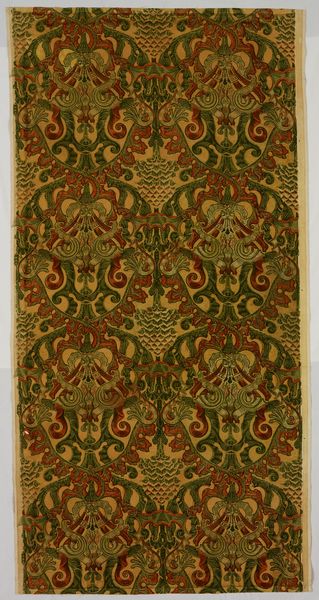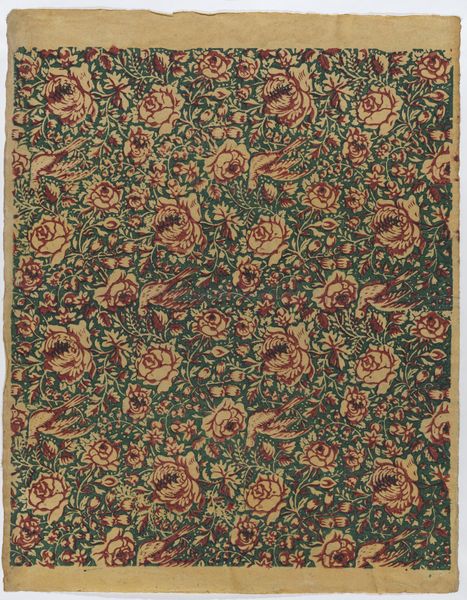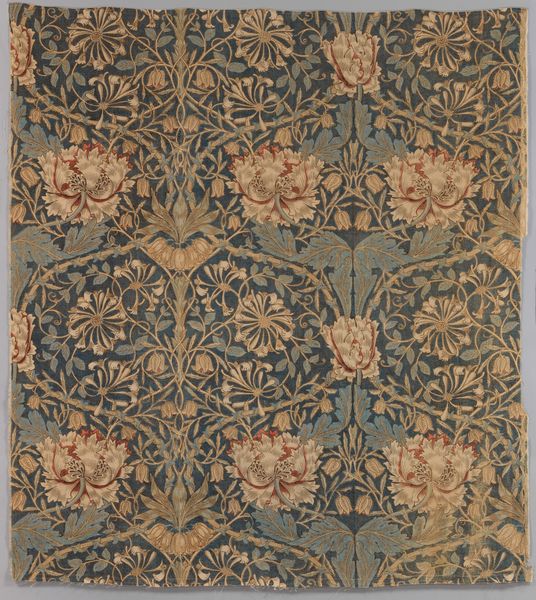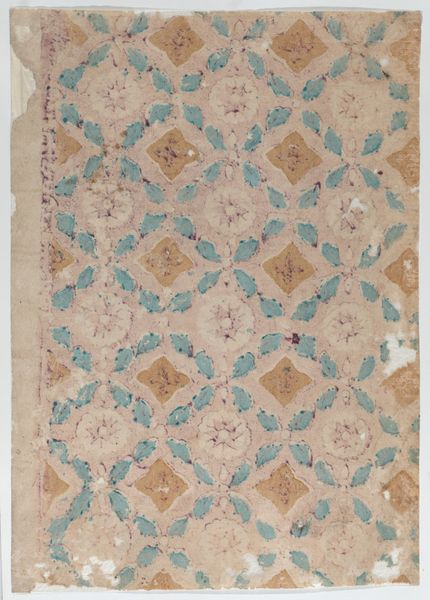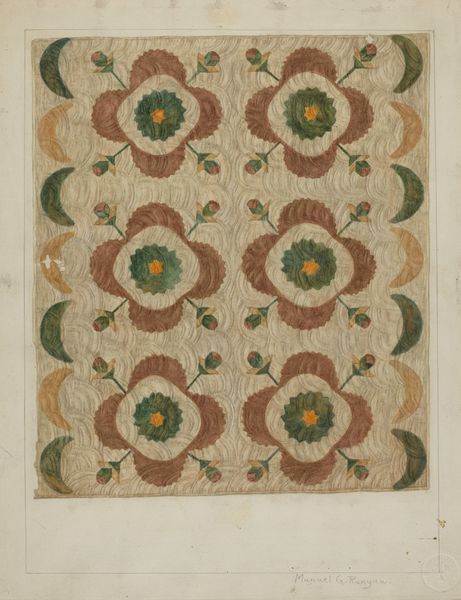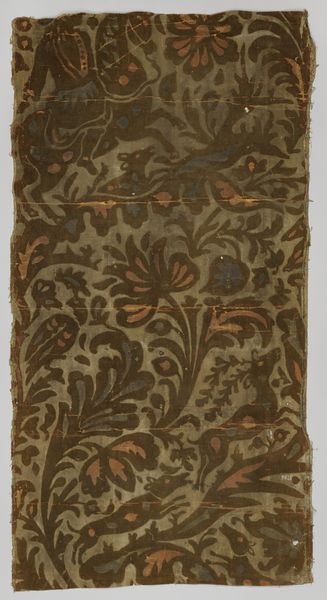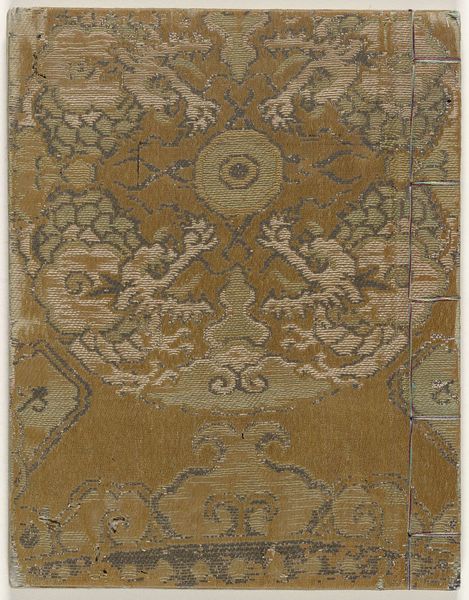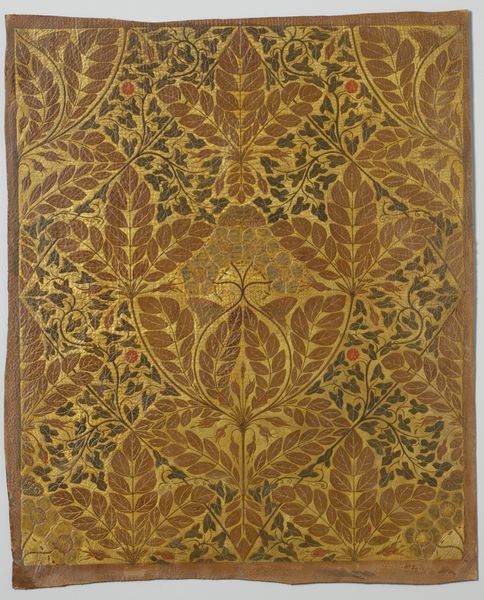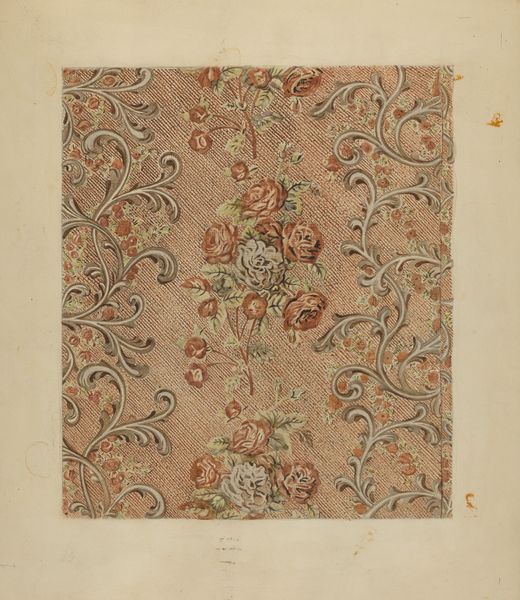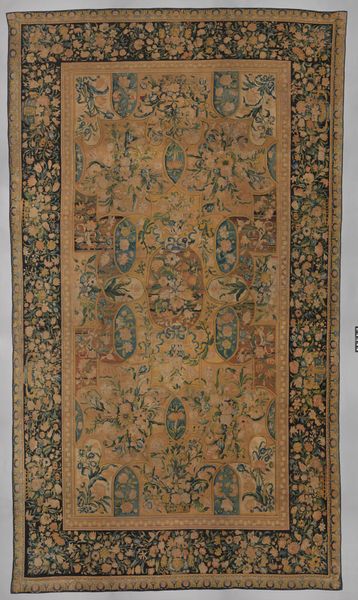
Dimensions: L. 90 x W. 27 inches (228.6 x 68.6 cm)
Copyright: Public Domain
Curator: I’m immediately struck by the texture of this textile work. The variations of green give it this subtle dimension and suggest something really interesting is happening on the surface. Editor: You're right. Let's take a closer look at this piece, "Flower Garden" made in 1879, attributed to William Morris and held at the Metropolitan Museum. It is a splendid example of textile design, so characteristic of the Arts and Crafts movement. Curator: I think "Flower Garden" carries that profound cultural longing for the natural world so typical of the late 19th century. It is not merely decorative; it speaks to a yearning for harmony and order that was being lost in rapid industrialization. Editor: And the organic pattern reinforces that too, echoing nature in both form and repetition. It would be intriguing to learn about the materials used to weave or print this, and about the process. Were natural dyes used? And how does that feed into Morris' larger ideology, the craftmanship and rebellion against mass-produced items? Curator: Absolutely. There's also a strong element of idealization. The garden isn’t literal but rather a symbolic construct—a retreat. These motifs, particularly the stylized flowers and acanthus-like leaves, possess enduring significance from ancient patterns reused throughout the era to communicate prosperity, leisure, and an ideal domesticity. Editor: It really drives home the art as labor aspect that Morris emphasized: not just the final product, but the careful selection and manipulation of materials and that whole process feeding into the item's intrinsic value. Curator: Indeed. And perhaps even subconsciously, that commitment to process imbued the work itself with deeper psychological impact on those who interacted with the material as decoration. Editor: Looking at "Flower Garden," I see a very tactile encounter with material shaping both the artist and their vision. Curator: I find in it this timeless call to reconnect with the very foundations of our aesthetic impulses and beliefs. Editor: A testament to the interwoven nature of creation itself.
Comments
No comments
Be the first to comment and join the conversation on the ultimate creative platform.
